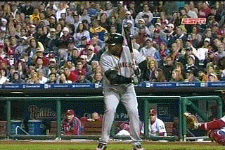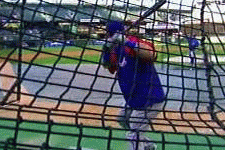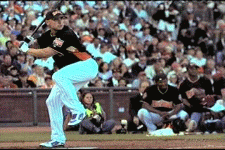Here are some pretty straight forward drills to use this off-season:
Click here
Original Post
Replies sorted oldest to newest




quote:Originally posted by Complete Game Baseball:
Strive for hard groundballs
quote:Originally posted by Complete Game Baseball:
Look, I'm not saying a batter should be taking hacks straight down...that's just illogical. The drills above let a batter work on getting hands directly to the ball then through the ball. Your examples of Bonds and Hamilton (both phenomenal power guys) are not swings you would try to replicate in young hitters. And the fact given about Williams trying deliver balls in the air also won't work with young hitters on a consistent basis. Strive for hard groundballs (YES they get through the infield, I've seen it happen more consistently than dropped fly balls) and well struck line drives.
You can't honestly think that teaching a kid to have even a "slight uppercut" is going to be useful. Getting your hands, which start above the hitting zone, down to where your making contact in the fastest path is by swinging down angle. A batter's hands naturally come back up through the hitting zone (and the plane of the ball) so don't mess that up by having a kid continue to swing underneath the ball. Top half.
I can't see your last example of modern hitter being useful in any way. It's a home run derby swing...
quote:Originally posted by SultanofSwat:quote:Originally posted by Complete Game Baseball:
Strive for hard groundballs
If that's the goal, your tee drills are perfect. We agree.
If a hitter wants to get the ball to the OF grass, don't use those drills.
quote:Originally posted by Low Finish:
So, what would you advocate in the way of drills?
quote:Originally posted by SultanofSwat:quote:Originally posted by Low Finish:
So, what would you advocate in the way of drills?
Put it on a tee and see how far you can hit it. Experiment. Repeat.